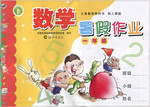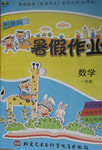题目内容
The leaves(树叶) fluttered(飘动)over Josh’s head. The park near his home had always been one of Josh’s 36 places. He liked to watch the colors of the trees glow(闪耀)in the sunlight, 37 the golden trees. It was the same color as his trumpet(小号). He smiled when he 38 the music the leaves made. Josh sat down and looked at his watch. His father would meet him in a few 39 for their first practice in the park.
Josh and his family lived in an apartment building.When Josh first began playing the trumpet, he 40 in his own living room. Then the family next door had a new baby. To avoid 41 the baby, Josh would 42 his practice time in the park. His father told him it would be good to practice in a wide, open 43 like the park. The baby next door would be able to sleep 44 , but Josh was not very happy with the 45 . He enjoyed visiting the park, but he didn’t want to practice there. He was 46 that he would embarrass(使……难堪)himself in a pubic place if he played the wrong notes(音符). He didn’t want people to 47 him as he played in the middle of the park.
Josh’s father was a great trumpet player, who once played in a jazz band. He couldn’t possibly understand how 48 it would be to practice in the park!
His father came over and 49 Josh’s daydream(遐想). “Josh, are you ready to practice?” He sat down and 50 his own trumpet from its case. He held the trumpet to his 51 and began to play. The beautiful music floated into the blue afternoon sky.
Josh looked up at the golden trees. The leaves 52 to be dancing to the tune his father was playing. Josh felt 53 as he watched the people walking by and smiling at his father.
He 54 to play like that. Josh put his trumpet to his mouth and blew. He had such a great time that he didn’t 55 if he played a few bad notes. Now he and his neighbors could all be happy.
| 【小题1】 |
|
| 【小题2】 |
|
| 【小题3】 |
|
| 【小题4】 |
|
| 【小题5】 |
|
| 【小题6】 |
|
| 【小题7】 |
|
| 【小题8】 |
|
| 【小题9】 |
|
| 【小题10】 |
|
| 【小题11】 |
|
| 【小题12】 |
|
| 【小题13】 |
|
| 【小题14】 |
|
| 【小题15】 |
|
| 【小题16】 |
|
| 【小题17】 |
|
| 【小题18】 |
|
| 【小题19】 |
|
| 【小题20】 |
|
【小题1】B
【小题2】D
【小题3】A
【小题4】B
【小题5】A
【小题6】B
【小题7】A
【小题8】C
【小题9】C
【小题10】C
【小题11】D
【小题12】B
【小题13】A
【小题14】B
【小题15】B
【小题16】C
【小题17】B
【小题18】D
【小题19】B
【小题20】D
解析【小题1】考查形容词。结合下文的He liked to watch the colors of the trees可知“他家附近的公园是Josh(最)喜爱的地方之一”。
【小题2】考查副词。他喜欢看树木在阳光下闪耀的颜色,尤其especially是黄金树。
【小题3】考查动词短语。结合下文可知此处是Josh’s daydream(遐想)。当他想到树叶发出的声音时Josh笑了。A. thought of 想起;B. looked for寻找;C. set out 出发;动身;D. picked up捡起;学会。
【小题4】考查名词。Josh在公园里等他父亲一起练习吹小号trumpet,所以他父亲应在几分钟minutes后到达。
【小题5】考查动词。下文是公园练习,最初是“在卧室里练习practice”。
【小题6】考查动词。为了避免惊醒wake隔壁的婴儿。
【小题7】考查动词。spend度过。在公园度过他的练习时间。
【小题8】考查名词。space场所,空地。像公园这样的宽阔开放的地方。
【小题9】考查副词。没有了Josh吹小号的干扰,婴儿睡觉自然好了。peacefully平静地;和平地。
【小题10】考查名词。但Josh却不喜欢把练习地点定在公园里的“安排”。
【小题11】考查形容词。Josh担心在公共场合练习出错使自己很尴尬。
【小题12】考查动词。他不愿意公园里的人看watch他练习。
【小题13】考查形容词。Josh是个很优秀的号手,他不可能理解在公园(人们的注视下)练习吹号是多么的尴尬。
【小题14】考查动词。interrupt打断。父亲的到来打断了Josh的遐想。
【小题15】考查动词。pull拉,拖。从包里拉出他自己的小号。
【小题16】考查名词。结合下文Josh put his trumpet to his mouth and blew可知此处答案。
【小题17】考查动词。seem好像。Josh的感受,不是真的。
【小题18】考查形容词。feel proud感到自豪。
【小题19】考查动词。结合下文可知此处应填一个褒义词。
【小题20】考查动词。受父亲的影响,Josh练习得很投入,没有去在意是否吹错。

 暑假作业海燕出版社系列答案
暑假作业海燕出版社系列答案 本土教辅赢在暑假高效假期总复习云南科技出版社系列答案
本土教辅赢在暑假高效假期总复习云南科技出版社系列答案 暑假作业北京艺术与科学电子出版社系列答案
暑假作业北京艺术与科学电子出版社系列答案